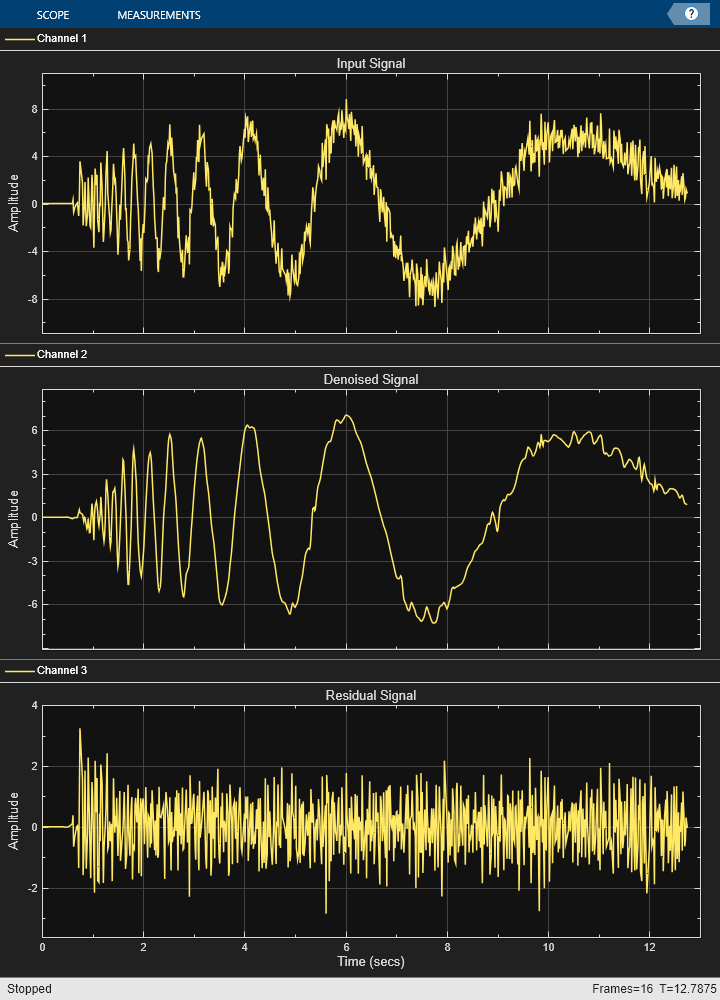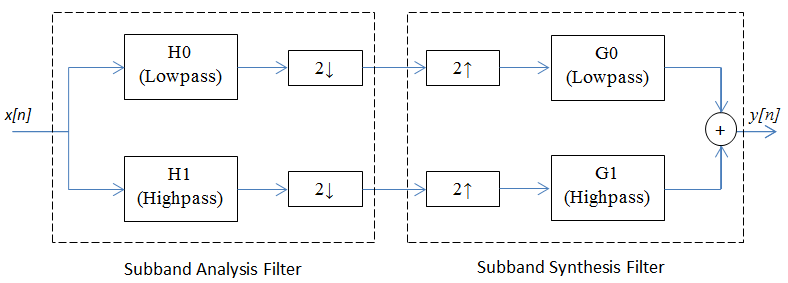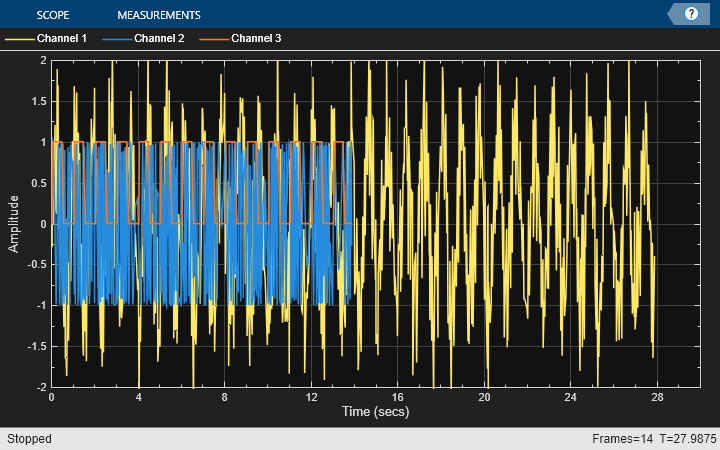Filtri multifrequenza e multistadio
I filtri multifrequenza sono filtri digitali che modificano la velocità di campionamento di un segnale digitale senza introdurre aliasing o imaging nel segnale convertito in velocità. Questi filtri sono classificati come decimatori che riducono la velocità di campionamento, interpolatori che aumentano la velocità di campionamento e convertitori di velocità che eseguono una combinazione di entrambi. Per i dettagli su queste operazioni di conversione di velocità e sul loro effetto sul segnale nel dominio del tempo e della frequenza, vedere Overview of Multirate Filters. DSP System Toolbox™ offre System object MATLAB® e blocchi Simulink® che implementano decimatori, interpolatori e convertitori di velocità. Le tecnologie di filtraggio avanzate, come i canalizzatori, i sintetizzatori di canale, i banchi di filtri a due canali a mezza banda e i banchi di filtri multilivello utilizzano questi filtri come componenti costruttivi.
È possibile implementare efficientemente un filtro multifrequenza con un fattore di conversione di velocità elevato in due o più stadi piuttosto che in un singolo stadio. Quando la progettazione è lunga (ossia contiene molti coefficienti) e costosa (ossia richiede molte moltiplicazioni e addizioni per ogni campione di input), l'approccio multistadio è più efficiente da implementare rispetto a quello a singolo stadio. Per ulteriori dettagli, vedere Overview of Multistage Filters.
Le funzioni designMultistageDecimator e designMultistageInterpolator in DSP System Toolbox determinano automaticamente la configurazione ottimale del filtro, che comprende la determinazione del numero di stadi e del fattore di conversione di velocità per ogni stadio. Una configurazione ottimale comporta il minimo sforzo computazionale; è possibile misurare il costo di tale implementazione utilizzando la funzione cost. Per un esempio, vedere Multistage Rate Conversion.
Oggetti
Funzioni
Blocchi
Argomenti
Velocità di campionamento e di fotogramma nei modelli multifrequenza
- Inspect Sample and Frame Rates in Simulink
Understand sample time, sample rate, frame period, and frame rate in the context of a Simulink model. Determine the sample and frame rates of signals in your model. - Convert Sample and Frame Rates in Simulink Using Rate Conversion Blocks
Learn how direct-rate conversion blocks impact the sample rate and frame rate of signals in Simulink models. - Convert Sample and Frame Rates in Simulink Using Frame Rebuffering Blocks
Learn how frame rebuffering blocks impact the sample rate and frame rate of signals in Simulink models.
Filtri multifrequenza
- Overview of Multirate Filters
Define multirate filters and understand decimation and interpolation. Understand aliasing and imaging and ways to avoid them. - Design of Decimators and Interpolators
This example shows how to design filters for decimation and interpolation of discrete sequences. - Multirate Filtering in MATLAB and Simulink
Perform multirate filtering using rate conversion objects and blocks. - FIR Nyquist (L-th band) Filter Design
This example shows how to design lowpass FIR Nyquist filters.
Filtri multistadio
- Overview of Multistage Filters
Different types of multistage filters and their uses. Learn how to implement decimators and interpolators using the multistage approach. - Multistage Rate Conversion
Design multistage rate conversion filters.
Banchi di filtri
- Overview of Filter Banks
Provides an overview of the channelizer, channel synthesizer, and the two-channel filter bank. - Two-Channel Filter Bank Using Halfband Decimators and Halfband Interpolators
Implement a two-channel filter bank using the FIR and IIR halfband filters. Compare the implementation cost and group delay. - Channelize and Synthesize Sine Wave in MATLAB
Channelize and synthesize sinusoidal signal in MATLAB. - Synthesize and Channelize Audio in Simulink
Synthesize and channelize audio signals. - Multilevel Filter Banks
Understand dyadic analysis and dyadic synthesis multilevel filter banks. - Calculate Channel Latencies Required for Wavelet Reconstruction
Learn how to calculate the latencies required for perfect wavelet reconstruction.
Dataflow
- Model Multirate Signal Processing Systems Using Dataflow
Use a Dataflow Subsystem to automatically calculate frame sizes in multirate systems.
Ritardo e latenza
- Time-Based Scheduling and Code Generation (Simulink Coder)
Consider continuous and discrete block usage, sample times, rate transitions for multirate models, discretization, and choosing between single-tasking mode and multitasking mode when designing models intended for code generation. - Delay and Latency
Configure the Simulink environment to minimize delay and increase simulation performance.





